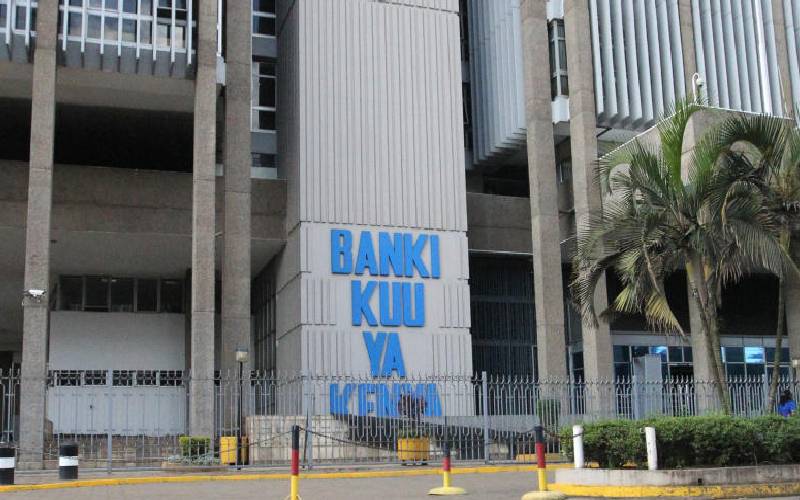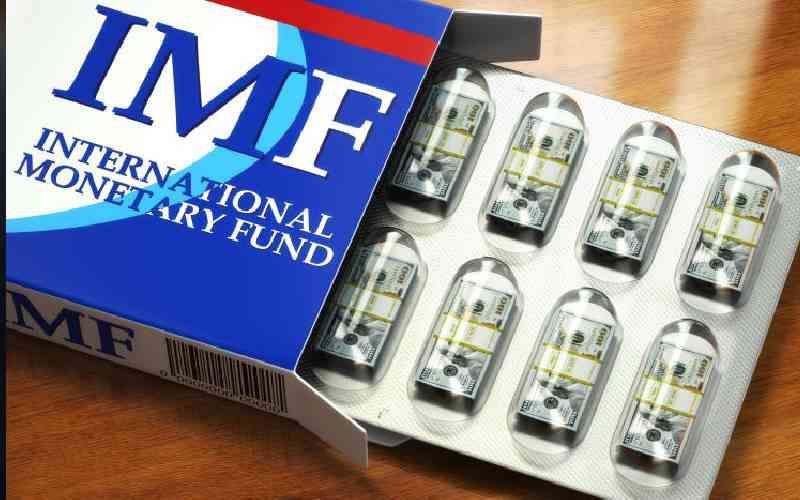
Ongoing talks for a bilateral trade agreement between the US and Kenya will certainly be the second most important economics topic of 2020 in this region.
The first prize has already been claimed by the devastating effects of the Covid-19 pandemic across every business sector. The opportunity to access the world’s largest Sh21 trillion-American market presents a rare chance to propel Kenya’s prosperity to new heights. Central to this discussion will be the Kenya shilling’s relationship with the global reserve currency that is the US dollar.
In the last couple of years, there have been echoes of dissatisfaction, not least from IMF, that claim the shilling’s exchange rate has not always been subject to the principles of a free market and could be significantly overvalued.
CBK has, however, strongly disputed this, saying its own internal study points to an undervaluation of the shilling. Considering that currency management draws from positive and normative economics, a spirit of compromise between CBK and IMF will be necessary in finding a lasting solution.
The External Balance Assessment (EBA) methodology was developed in 2012 by the IMF as part of a broader effort to address global imbalances in the international monetary system. It replaced the previous Consultative Group on Exchange Rates (CGER) methodology which largely targeted advanced economies. However, due to an increase in global trade and international financial integration, there was a need to develop a new framework to strengthen exchange rate surveillance.
The EBA methodology covered 49 advanced countries and in 2015, a secondary methodology – the EBA Lite methodology was introduced to cover the rest of the member nations of the IMF. The reception of this new model has not been without controversy.
Earlier this year, Ghana was on the receiving end of a stern warning from the IMF for maintaining a weaker external position than the one predicted by the EBA-Lite model. Rather curiously, the IMF argued that Ghana’s main stability will be anchored on the $3 billion Eurobond issued in March 2019 and other commercial and multilateral borrowing.
It is understandable that the CBK would prefer a methodology that demonstrates the shilling is undervalued and not overvalued - partly because of Kenya’s external debt position. Kenya’s public debt is well over Sh6.7 trillion, half of which is held in foreign currency. Any material slide in the exchange rate would not only see a dramatic increase in debt repayment amounts, it would also expose the country to a spike in imported inflation.
This should be sufficient to warrant a pushback against hardline IMF positions which have historically pushed countries into deep crisis. A perfect example is the role of the IMF in triggering the Asian crisis in 1997 by placing unreasonable demands on countries such as Thailand, which culminated in a rapid depreciation of Thailand’s currency, the Baht, ultimately forcing it to implement ill-advised reforms that had a lasting damage on the economy.
In his book ‘Globalisation and Its Discontents’, Nobel Prize economist Joseph Stiglitz argues that the policies implemented by the IMF, often under the most relentless pursuit of Washington Consensus policies, act against the interest of impoverished developing countries.
That said, there is strong evidence to suggest that the shilling is overvalued particularly looking at balance of trade data as well the frequency by which the Central Bank intervenes in the market.
Trade deficit
Currency overvaluation places enormous risks to an economy. It reduces the export competitiveness of a country- a trend which has been witnessed in Kenya, leading to a point where for the first time in more than two decades, Kenya runs a trade deficit with Africa. The manufacturing sector is often the hardest hit, and if not well managed, it could lead to the eroding of the country’s industrialisation agenda and attendant job losses.
Considering the above constraints, the only possible solution must be to reach a compromise and a meeting of minds between CBK and IMF policymakers. The current structure of the global financial architecture as supervised by the IMF will favour the EBA Lite methodology.
Stay informed. Subscribe to our newsletter
But countries in the developing world such as Kenya which carry significant external debt cannot be expected to adopt it overnight. A five-year roadmap must be provided for Kenya to make structural reforms to reduce the size of its dollar debt and to make investments in key sectors that will attract foreign exchange particularly from Diaspora remittances, tourism, tea, coffee and horticulture.
Mr Gichinga is Chief Economist at Mentoria Economics
 The Standard Group Plc is a
multi-media organization with investments in media platforms spanning newspaper
print operations, television, radio broadcasting, digital and online services. The
Standard Group is recognized as a leading multi-media house in Kenya with a key
influence in matters of national and international interest.
The Standard Group Plc is a
multi-media organization with investments in media platforms spanning newspaper
print operations, television, radio broadcasting, digital and online services. The
Standard Group is recognized as a leading multi-media house in Kenya with a key
influence in matters of national and international interest.
 The Standard Group Plc is a
multi-media organization with investments in media platforms spanning newspaper
print operations, television, radio broadcasting, digital and online services. The
Standard Group is recognized as a leading multi-media house in Kenya with a key
influence in matters of national and international interest.
The Standard Group Plc is a
multi-media organization with investments in media platforms spanning newspaper
print operations, television, radio broadcasting, digital and online services. The
Standard Group is recognized as a leading multi-media house in Kenya with a key
influence in matters of national and international interest.









